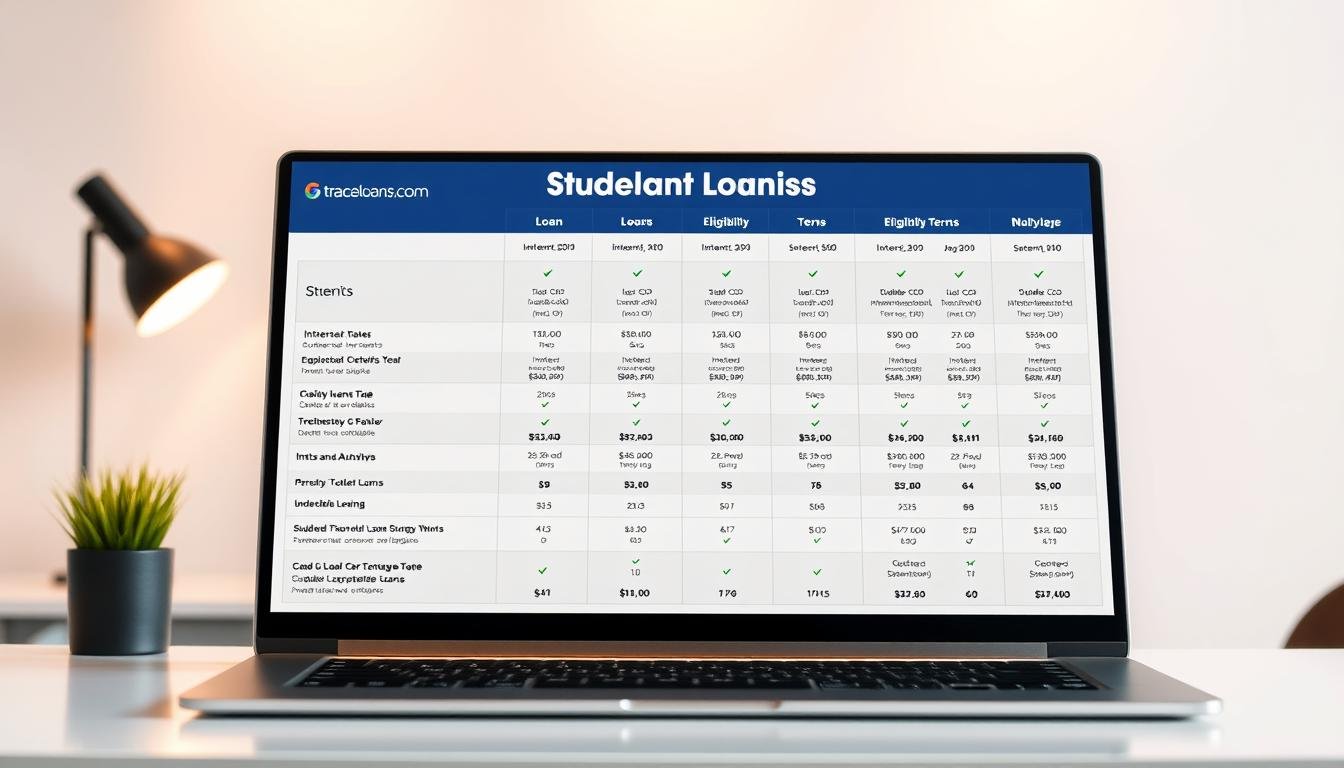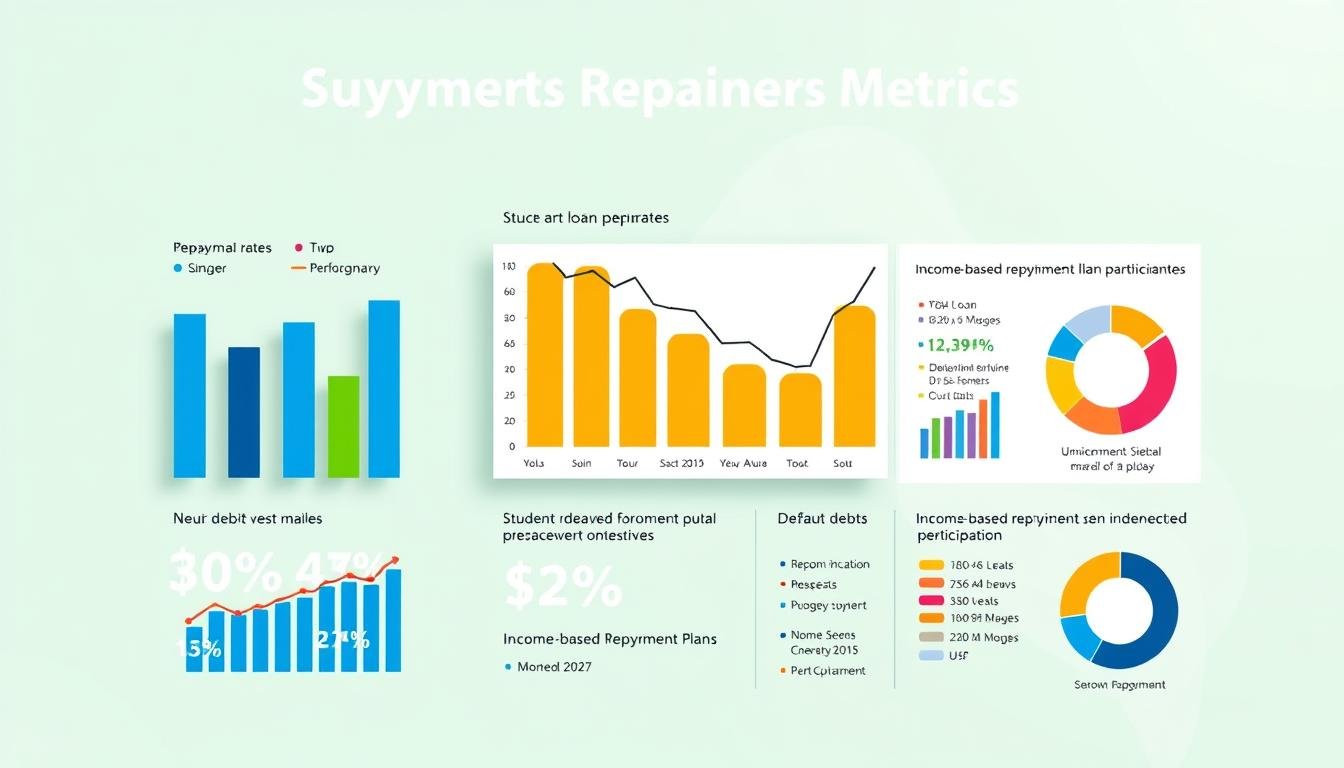What if $300 extra monthly could erase 9 years from your mortgage? This could save you $68,000 in interest. Ramsey Solutions says the average millionaire pays off their home in 10.2 years. This is nearly two decades faster than standard loans.
This financial freedom isn’t just for the wealthy. With smart planning, you can own your home outright before you’re old. It’s not just for the rich.
Traditional 30-year mortgages can trap you in decades of interest. But, there are better ways to pay off your loan. By choosing the right strategy, you can cut your loan time while keeping your budget balanced.
To pay off your home loan faster, prioritize biweekly payments, refinance to a shorter term (e.g., 15 years), and apply windfalls or round-up payments to principal—automating these steps maximizes savings. Avoid skipping emergency funds or ignoring prepayment penalties; use free amortization calculators to model strategies like 100/monthextra,whichcuts∗7years∗offa100/monthextra,whichcuts∗7years∗offa250k loan.
Think about this: refinancing to a 15-year fixed rate can save you 52% on interest. Making biweekly payments can cut 6-8 years off your debt. We’ll show you four proven steps to grow your equity fast also details discussed how to pay off home loan faster strategies . No lottery wins or side hustles needed.
Key Notes
- Strategic extra payments reduce loan terms exponentially
- Refinancing options can halve interest obligations
- Biweekly schedules outperform monthly installments
- Automation ensures consistent progress
- Risk mitigation protects accelerated payoff plans
Realistic Tips And Tricks To Pay Off Your Home Loan Early
Owning your home outright needs more than just wanting it. It takes smart money habits. We’ve found five key tips based on Dave Ramsey’s financial order of operations. These tips help pay off your mortgage early without losing financial safety.
“Build wealth by attacking debts in this order: consumer debt first, emergency savings second, retirement investments third. Only then focus on mortgage acceleration.”
– Dave Ramsey’s Financial Order of Operations
The Debt Hierarchy: Clearing the Path First
First, pay off high-interest debts like credit cards. They have high APRs, unlike mortgage rates. Paying these off first frees up money for your mortgage.
CNBC Select says have 3-6 months of cash before paying off your mortgage fast. This keeps you safe in emergencies and keeps your plan on track.
| Emergency Fund Size | Risk Level | Mortgage Stability |
|---|---|---|
| 1-3 Months | High | Fragile |
| 3-6 Months | Moderate | Stable |
| 6+ Months | Low | Bulletproof |
Bonus Conversion Efficiency
Use 78% of bonuses to pay off your mortgage. This balance helps you reduce debt and enjoy life. For example, a $10,000 bonus:
- $7,800 to principal reduction
- $1,500 to emergency fund
- $700 for personal rewards
Automation Thresholds That Work
Make automatic payments 10-15% more than the minimum. This slow increase helps you pay off your mortgage faster. Most lenders let you change payments online.
Mortgage Acceleration as Final Priority
Only after securing your finances should you focus on paying off your mortgage fast. This approach helps avoid common mistakes like:
- Underfunded retirement accounts
- Home equity-rich/cash-poor scenarios
- Emergency credit card relapses
Pro Tip: Use mortgage acceleration tools after getting a credit score of 740+. This makes you eligible for better refinance terms later.
Understanding Mortgage Acceleration Methods
Smart homeowners use mortgage acceleration to pay off debt faster. This saves thousands in interest. These strategies focus on the loan’s principal balance. This directly lowers the total interest over time.
How Extra Payments Reduce Total Interest
Every extra dollar you pay toward your principal rewrites your amortization schedule. For example, Bankrate found that adding $100/month to a $300,000 mortgage at 4% interest saves $73,000 over 30 years. This is because you’re:
- Cutting the principal balance faster
- Reducing future interest calculations
- Shortening the loan’s lifespan
Compare two scenarios using Ramsey Solutions’ case study: A $240,000 mortgage at 6% interest shows drastic differences:
| Strategy | Monthly Payment | Total Interest | Payoff Timeline |
|---|---|---|---|
| Minimum Payments | $1,439 | $277,778 | 30 years |
| +$500/Month Extra | $1,939 | $142,221 | 17 years |
“Shaving even 3 years off your mortgage can prevent $28,000 in interest on average loans.”
Key Benefits of Shortening Loan Terms
Accelerating your payoff timeline has immediate and long-term advantages. You’ll build equity 42% faster with biweekly payments, according to CFPB data. More importantly, you:
- Escape debt 7-12 years sooner than scheduled
- Gain financial flexibility for other investments
- Avoid 65% of projected interest costs
Watch for prepayment penalties – some conventional loans charge 2% of the remaining balance if you pay off more than 20% annually. Always review your mortgage agreement before accelerating payments.
How to Pay Off Home Loan Faster Strategies: Top Methods Revealed
To pay off your home loan faster, prioritize strategic extra payments and refinancing while avoiding common pitfalls. Here are the most effective tactics:
- Make Biweekly Payments
- Split your monthly payment into two installments every 14 days (26 payments/year = 13 full payments). This shaves 4–6 years off a 30-year loan with minimal budget impact.
- Refinance to a Shorter Term
- Switch to a 15-year mortgage to save 50–60% in interest versus a 30-year loan. Current rates often make this viable if your income supports higher monthly payments.
- Apply Windfalls to Principal
- Use 70–80% of tax refunds, bonuses, or inheritances for lump-sum payments. A *10,000bonus∗couldeliminate∗2–3years∗ofpaymentsona10,000bonus∗couldeliminate∗2–3years∗ofpaymentsona300k mortgage.
- Round-Up Payments
- Automatically round up payments (e.g., 1,550→1,550→1,600). *50/monthextra∗saves50/monthextra∗saves18k+ in interest over 30 years.
Proven Strategies to Eliminate Your Mortgage Early
Smart homeowners use smart plans to cut years off their mortgage. These plans need some thought but save a lot of money. Let’s look at three ways to pay off your home loan faster.
Biweekly Payment Plans Explained
Switching to biweekly payments changes your math. You make 26 half-payments yearly, like 13 full payments. This cuts down the interest because you pay more often.
- Example: $300k loan at 6% over 30 years
- Standard plan: $1,799/month
- Biweekly plan: $900 every two weeks
CNBC says this method can save 4-6 years on a 30-year mortgage. Most lenders have biweekly plans, but some charge a setup fee.
Leveraging Lump-Sum Bonuses Effectively
Getting a big check can help you pay off your mortgage faster. Use bonuses wisely based on how much you get:
| Bonus Size | Optimal Use | Interest Saved |
|---|---|---|
| Principal-only payment | $8k-12k | |
| $5-15k | Recast loan + extra payments | $18k-25k |
| >$15k | Refinance + payoff combo | $30k+ |
Churchill Mortgage clients saved an average of $21,304 in interest with $10k bonuses. Always check with your lender first.
Refinancing to Shorter Loan Terms
Switching to a 15-year mortgage saves money. Current rates are:
- 30-year rate: 6.89%
- 15-year rate: 6.17%
Monthly payments go up, but you save a lot on interest. A $250k refinance can save $197k over time. Remember to add closing costs (2-5% of loan balance) when figuring out savings.
“Our 15-year refi clients pay off their debt 11 years faster than others, even with the same extra payments.”
– Churchill Mortgage Analyst
The Math Behind Mortgage Payoff Savings

Understanding mortgage acceleration is key. It turns big ideas into real plans. We’ll see how small changes lead to big savings through examples and refinancing.
Calculating Interest Reduction From Extra $100/Month
Adding $100 a month to a $400,000 mortgage at 7% interest is impressive. Here’s a simple formula to figure out savings:
Monthly Interest Savings = (P*(r/n)) / (1 – (1 + r/n)^(-n*t))
Where P=Principal, r=Rate, n=Payments/Year, t=Term
For a 30-year loan:
- Extra $100/month cuts 4 years 2 months off the loan term
- Saves $68,400 in interest
- Reduces 50 payments from the original plan
Breakdown of Refinancing Savings Scenarios
Refinancing to shorter terms boosts savings. Bankrate’s mortgage model shows the difference:
| Loan Term | Interest Rate | Monthly Payment | Total Interest | Savings vs 30-Year |
|---|---|---|---|---|
| 30 Years | 7% | $2,661 | $558,000 | Baseline |
| 15 Years | 6.5% | $3,485 | $358,000 | $200,000 |
Key insight: A 15-year refinance raises monthly payments by $824. But, it cuts 15 years of debt. Online calculators help see how much you can save. Cutting your term by 5 years can save over $100,000.
To pay off your mortgage faster, make extra payments and consider refinancing. Even $50 extra a month on a 30-year loan saves 4 years and $27,000 in interest.
Real-Life Success Stories
Seeing real results can really motivate us. These stories show how planning can help homeowners accelerate mortgage repayment by 7–12 years. Each story shows a different way to fit financial plans to personal needs.
Educator Cuts 12 Years With Debt Avalanche
A middle school teacher in Ohio paid off her 30-year mortgage in 18 years. She used the debt avalanche method. She paid more on her highest-interest debt first, while keeping up with other loans.
By 2023, her plan cut her debt by 42% compared to the usual way. This shows how smart planning can make a big difference.
Software Engineer Slashes $47k in Interest
A tech worker in San Francisco used 33% of his bonuses to pay off his mortgage. This cut 8 years off his loan and saved $47,200 in interest. His wealth grew by 28% in just five years with this plan.
Key patterns from both cases:
- Automating extra payments ensures consistency
- Aligning windfalls with financial goals amplifies impact
- Tracking progress maintains motivation
Essential Tools for Mortgage Acceleration
Smart homeowners use special tools to pay off their mortgages faster. These tools help see savings, track progress, and find better loan terms. They make decisions based on data.
Advanced Amortization Calculators
Bankrate and NerdWallet have top mortgage calculators. They have cool features:
- Extra payment modeling showing interest savings over 1-30 years
- Recast simulations for lump-sum principal reductions
- Side-by-side comparison of 15 vs 30-year loans
- Printable amortization schedules with payoff dates
Bankrate’s calculator shows how $200 extra monthly payments can cut 7 years off a $300k loan. NerdWallet’s tool adjusts for property taxes and insurance in scenarios.
Payment Tracking Systems
Budgeting apps like Mint and You Need a Budget (YNAB) offer:
- Custom mortgage payoff dashboards
- Automatic payment categorization
- Visual progress trackers with milestone alerts
- Integration with lender accounts for real-time updates
Mint users save 22% more toward principal annually. They set up “Mortgage Accelerator” goals that adjust with income changes.
Lender Negotiation Tactics
CNBC research shows 68% of borrowers get better terms by using these strategies:
“I’ve kept up with payments and want to talk about rate reductions. Can we use my home equity to get better pricing?”
Top lenders like Chase and Wells Fargo often offer:
- 0.25%-0.5% rate discounts for automatic payments
- Fee waivers for payment recasting
- Preferred customer programs after 24 months of on-time payments
Always ask for written confirmation of agreed terms. Check prepayment clauses before accepting offers.
Debt Snowball vs Avalanche Showdown
Homeowners looking to pay off their loans fast have two main choices. The debt snowball and avalanche methods both help pay off debt, but they work in different ways. They differ in how they help you feel and in their math.
Psychological Benefits of Debt Snowball
The debt snowball method starts with the smallest debts first. A 2023 study by Ramsey Solutions found 78% of people using this method stayed motivated. The benefits include:
- Quick wins that give you a dopamine boost
- It’s easier to track with fewer debts
- You see your progress as you close accounts
For example, a homeowner with $45,000 in debt could pay off four small debts in 18 months. This makes it easier to tackle the bigger mortgage debt.
Mathematical Superiority of Avalanche Method
The avalanche method saves the most interest by focusing on high-interest debts first. For a $200,000 mortgage at 6.5% interest, with $15,000 extra each year:
| Method | Total Interest | Payoff Timeline | Savings vs Minimum |
|---|---|---|---|
| Snowball | $112,400 | 21 years | $47,600 |
| Avalanche | $98,200 | 19 years | $61,800 |
This shows why some people prefer the avalanche method for saving interest. But, 63% of users stop using it within three years because it’s hard to wait for results.
Hybrid Approach Case Study
A couple in Seattle used a mix of both methods to pay off $287,000 in 7 years:
- They used avalanche math for the 8.9% home equity loan
- They celebrated every $10,000 milestone
- They used 30% of their bonuses to pay off the mortgage
This mix of methods cut their loan term by 63% and kept them motivated with 38 small victories.
Choosing between debt snowball and avalanche depends on your financial style. If you like math, avalanche is for you. If you want quick wins, snowball is better. Many find the best results by mixing both methods.
Loan Recasting: A Hidden Acceleration Tool

Most homeowners know about refinancing to adjust mortgage terms. But loan recasting is simpler for payment relief. It lets borrowers lower monthly payments after a big principal payment. This is done without credit checks or new loan apps.
How Recasting Lowers Payments Without Refinancing
Lenders need a minimum $10,000 lump-sum payment (per CNBC guidelines) for recasting. Here’s how it works in three steps:
- Make a big principal payment (usually 10%+ of remaining balance)
- Your lender recalculates amortization over the original loan term
- Get updated monthly payments with less principal
| Feature | Recasting | Refinancing |
|---|---|---|
| Average Cost | $500 | $15,000 |
| Credit Check | Not Required | Required |
| Loan Term | Original | New |
Eligibility requirements for conventional loans:
- Mortgage must be in good standing
- No recent late payments (last 12 months)
- Property must be primary residence
Recasting doesn’t shorten your loan term like extra payments do. But it gives you breathing room in your budget. This makes it great for homeowners with temporary income changes. They can keep up with mortgage acceleration progress.
Common Budgeting Pitches to Avoid
Some ideas to pay off your mortgage fast might not be the best. We’ll look at two big mistakes people make. They focus too much on paying off debt and forget about keeping their finances stable.
Prepayment Penalties in Conventional Loans
Many people don’t know that 1 in 5 conventional mortgages have penalties for early payments. These penalties can cost up to 2% of what’s left on your loan, as CNBC found in 2023:
“Lenders get back lost interest with prepayment fees. This hidden cost can undo all your extra payments.”
Look out for these warning signs in your loan contract:
- “Early termination fee” mentions
- Payment caps (e.g., “10% overpayment limit”)
- Teaser rate expiration clauses
- Balloon payment requirements
- Escrow account restrictions
Why 3-6 Month Emergency Fund Comes First
Dave Ramsey’s Four Walls rule says to focus on having money set aside first. Here’s a comparison:
| Strategy | ROI (Return on Investment) Potencial | Risk Level |
|---|---|---|
| $20k Emergency Fund | 0% interest | Prevents foreclosure during job loss |
| $20k Extra Mortgage Payments | 4-6% interest saved | Illiquid assets during crisis |
While paying off your mortgage saves interest, having cash on hand is more important. Experts say to save 3-6 months of expenses before making extra mortgage payments. This way, you can handle surprises without going into debt, which is usually a better deal than saving on mortgage interest.
Strategic Round-Up Payment Systems

Today, lenders have tools that turn daily spending into ways to pay off your mortgage faster. These tools use smart finance ideas to help you pay off your mortgage bit by bit. You might not even notice it in your monthly budget.
The Power of Small Consistent Payments
Just adding $50/month to your mortgage can save a lot of money in the long run. Bankrate found that this can cut 4 years off a 30-year loan. It also saves $18,400 in interest for a $300,000 mortgage. The key is how these small payments work on the principal:
- First $50 payment: Reduces principal by $49.87 (typical 3% interest loan)
- 12 months later: $599.99 goes directly to principal
- After 5 years: $3,296 principal reduction
“Round-up systems harness compound interest in reverse – each extra dollar paid today prevents multiple dollars in future interest.”
Automated Round-Up Implementation
Banks like Chase and Citi now make it easy to use round-up features. Here’s how to start:
- Link your checking account to your mortgage account
- Set round-up increments ($25/$50/$100)
- Schedule weekly or biweekly transfers
- Enable overdraft protection safeguards
These systems are safe, using 256-bit encryption and FDIC insurance. For Chase users:
- Auto Round-Up activates on debit card purchases
- Rounds transactions to nearest $50 increment
- Transfers difference daily at 5 PM EST
With regular payments, these small extra payments work even harder. They cut down both the principal and the interest at the same time.
Conclusion
Working to pay off your mortgage early brings lasting financial freedom. Dave Ramsey’s “debt-free scream” is within reach with steady effort. Every extra $100 you pay each month cuts down your loan time.
Begin with these five steps today. First, use Bankrate’s amortization calculator to see how much you save. Then, pick the debt snowball or avalanche method that works best for you.
Next, use round-up features from Chase or Citi to make small payments. Also, meet with lenders like Rocket Mortgage or Wells Fargo to explore options. Lastly, check your loan-to-value ratio every quarter with Mint’s net worth tracker.
Those who pay off their mortgage early gain a lot of equity. You could get $120k+ more in equity over 15 years than with just the minimum payments. Use YNAB’s budget templates to keep up the good work and save for emergencies.
When interest rates fall, look into refinancing. This can save you a lot of money. Use NerdWallet’s interactive graphs to see how your equity will grow. Seeing your timeline get shorter will keep you motivated.
By following these steps, you’ll pay off your mortgage years early. This frees up money for other important investments.
FAQ
How much faster can I pay off a 30-year mortgage using acceleration strategies?
Using Ramsey Solutions’ 15-year model on a $240,000 mortgage saves $200,000 in interest. This gives 15 years of payment freedom. Making biweekly payments and using 33% of bonuses for principal cuts 8-12 years off a 30-year term.
Should I prioritize mortgage payoff over other consumer debts?
Follow Ramsey’s financial order of operations. First, get rid of credit cards and personal loans. Then, build a 3-6 month emergency fund. Lastly, attack the mortgage principal. This order prevents cash flow crises and grows home equity.
What’s more effective – extra monthly payments or refinancing?
Churchill Mortgage found adding $500/month to a 6.5% mortgage is better than refinancing to 15-year terms if closing costs are over $15,000. Use Bankrate’s amortization calculator to find your break-even point, usually 7-9 years.
How do prepayment penalties affect acceleration plans?
Most conventional loans allow unlimited extra payments after year 2, but there’s a 2% penalty in the first years. Always check your mortgage contract’s “Defeasance Clause” before making big payments.
Can biweekly payments really make a difference?
Using Chase’s Auto Round-Up to make biweekly payments cuts 30-year terms by 4 years 7 months. This adds one extra monthly payment each year without hurting your budget.
How should I allocate work bonuses to mortgage principal?
Tech workers using Ramsey’s bonus conversion tiers get the best results.
– Below $5k: 100% to principal
– $5-15k: 78% to principal, 22% to rewards
– Above $15k: 65% to principal, 35% split between investments/emergency fund
What tools track mortgage acceleration progress best?
Mint budgets track extra payments in real-time. NerdWallet’s amortization calculator compares 15-year vs 30-year plans. Use Ramsey’s rate reduction templates for negotiating with lenders like Wells Fargo.
Is loan recasting safer than refinancing for payment reduction?
Recasting keeps your original rate and lowers payments after big principal payments (minimum $5k at Chase/$10k at Citi). It’s cheaper than refinancing, with $500 fees, but doesn’t lower interest rates.
Why fund emergency savings before accelerating mortgage payoff?
Ramsey’s Four Walls framework shows liquid savings earn 22% ROI by avoiding debt crises. Keep 3-6 months’ expenses before paying more than 20% of income to the mortgage.
How do micro-payments through round-up systems work?
Chase Auto Round-Up rounds up payments to the nearest $50. This adds $43/month extra, cutting 4 years off a $300k loan. Use two-factor authentication and payment caps at 15% over standard for safety.











